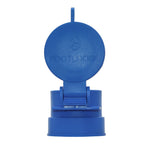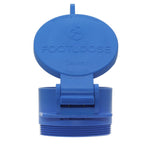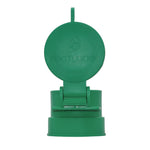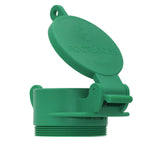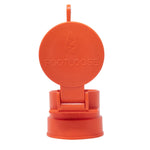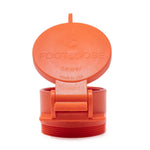You have no items in your shopping cart.
If you’re new to the camper community, you might be apprehensive about the whole concept of showering in an RV. Compared to the shower you use in your home, an RV shower contains a lot less space, hot water is used sparingly, and you certainly won’t be lingering in there for an hour.
Fortunately, with the arrival of modern features and strategies, showering in an RV can be a comfortable and even pleasurable experience. Here are some ways you can enhance your RV’s shower system with a few tools and tricks.
What to Consider When Showering in an RV
Caring for your RV’s water system is essential to keeping it in great condition and extending its longevity. Showering in an RV seems simple enough, but there are a few things that you may need to consider before heading into the stall.
Indoor or Outdoor Shower?
Depending on the type of RV you have, your shower will either be installed indoors or outdoors. Some RVers favor outdoor showers as a way to become closer to nature, while others enjoy the luxury of an indoor shower. However, some differences exist between the two.
An outdoor shower allows you to shower on land, which means any water you use will be absorbed into the earth. In an indoor shower, you’ll need to put more consideration into capturing gray water, which is the wastewater that goes down your RV drains and enters your gray water tank. When this tank becomes full, empty the water into an appropriate dump station with an RV gray water hose.
Monitor Your Water Usage
At home, you may be used to showering under a showerhead that flows an endless supply of water. However, as an RVer, you’ll quickly learn that water and energy sources are limited and don't always come cheap. A standard Class C RV will hold 35-60 gallons of water, while a Class B will hold around 20-40. According to the EPA, the average showerhead will use 2.5 gallons of water per minute, so if you aren’t managing your resources effectively, this water can run out quickly.
Considering your water tank also provides water for toilet use, cleaning, and cooking, it’s important to find methods of showering that use less water. A common method is the “military shower,” where the participant turns off the water flow between each lather and rinse. This helps conserve both your freshwater and the energy required to heat it.
Keep It Clean
When you’re in nature, you may not always be thinking about hygiene. But keeping your bathroom area clean is essential to preventing grime build-up and unpleasant odors from arising in your RV. Clean your shower stall after each use by using a microfiber towel to wipe up condensation collected on your shower walls, floor, and head. If your RV shower isn’t separated from other bathroom appliances, make sure to wipe down all surfaces, including faucets, countertops, and the top of your toilet tank.
If you’re looking for a more thorough cleaning, opt for more gentle cleansers and cloths to scrub, wipe, and clean. This prevents any damage to surfaces caused by steel wool or other abrasive chemical cleaners. Lastly, when you finish your shower, consider dropping in a dryer sheet to absorb scum or build-up.
Ensure Safe Water Pressure Levels
While high water pressure is highly sought-after in the RV world, it’s important to ensure that your water pressure is at a safe level. Water pressure that is considered safe for an RV is between 40 and 50 PSI, and anything exceeding 60 PSI could risk damaging your water system.
If you find that your water pressure is on the lower side, you can try replacing your showerhead or inspecting your water system for blockages and build-up or broken pipes. Investing in a water pressure regulator can also help effectively maintain your water pressure levels without risking the safety or efficiency of your water supply.
Minimize Moisture in Your RV
It’s common knowledge that excessive moisture can lead to mold growth in some areas of your home, and the same goes for an RV. Taking a hot shower in a small space can cause the air to quickly fill with steam, and the key to removing this moisture is proper ventilation and water removal.
Most RVs will have a vent fan already installed in the bathroom or somewhere in the ceiling, but some will simply have a window that you can crack open to allow airflow out of the RV. When you’re finished showering, make sure to lead residual water into the drain with a squeegee or a microfiber towel.
How to Improve Your RV Shower
Even if your RV comes equipped with a brand-new, high-tech shower system, there are always ways you can improve your RV shower experience. Whether it’s investing in a small feature or decorating your shower with caddies, an RV shower can provide opportunities for you to upgrade your camper van to your personal preferences.

Invest in a Good Showerhead
Whether you’re at home or in an RV, better showering often starts with the showerhead, and for good reason. When looking for a new showerhead, keep an eye out for models that claim to be low-flow with higher water pressure. Many RV showerheads have features that make showering in a camper much easier, including a shut-off valve that allows you to restrict water flow to conserve resources without turning off the system completely. You may also enjoy a detachable wand showerhead, which makes it easier to rinse off all parts of your body in a small space.
Get a Tankless Water Heater
A popular feature in modern RVs is the tankless water heater, which essentially provides you with an endless supply of hot water and keeps the temperature consistent throughout your shower. It also helps reduce water wastage while waiting for the water to heat up and allows you to take a longer shower while connected to hookups. If you’re the type of person who can’t go without long, hot showers, installing this feature into your RV may go a long way in providing you with optimal comfort on the road.
Install a Shower Skylight
Showering in an RV can be tight, dark, and clammy, which is why some campers will have a shower skylight equipped to illuminate the stall. If your RV doesn’t come with the skylight pre-installed, you can do it yourself with a few power tools.
What Do You Think About Showering in an RV?
When you take proper care of your water system, showering in an RV can be done easily and efficiently. In fact, your RV’s plumbing system is a huge part of keeping your shower running smoothly, which makes it necessary to maintain it accordingly throughout the year.
If you’re looking for ways to better manage your water system in the upcoming colder months, take a look at our step-by-step guide to winterizing your RV’s plumbing or looking to join an RV club?



